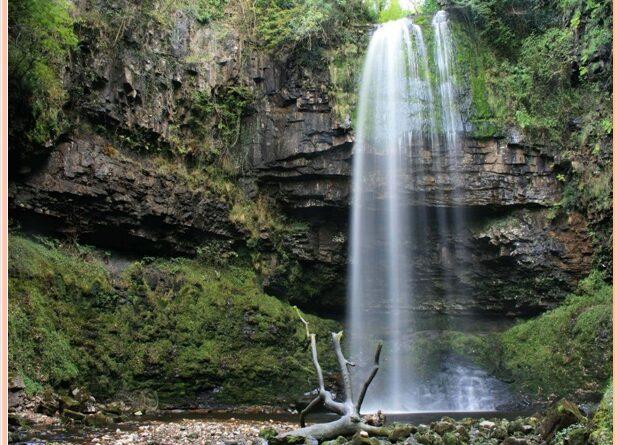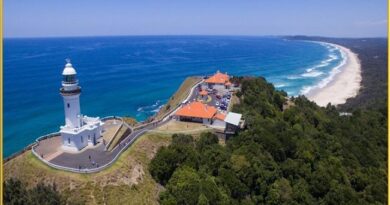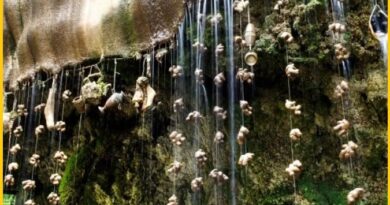‘Henrhyd Falls’ in the Brecon Beacons National Park, That starred in the Dark Knight Rises
Introduction
Henrhyd Falls in the Brecon Beacons National Park, Wales, is the tallest waterfall in southern Wales with a drop of almost 30 m. it cascades into a gorge within the Nant Llech valley and is one of the only waterfalls in the UK that allows you to walk behind it. This hidden gem could be the best location if you want to escape from the crowds. It lies on National Trust land, in the county of Powys. The nearest settlement to it is Coelbren, on the road between Glynneath and Abercraf. Henrhyd falls come crashing through the Graig Llech Gorge into a small lagoon below which allows for wild swimming.

The area is a Site of Special Scientific Interest (SSSI) because of coal findings. The erosion around the gorge of Nant Llech produces fossils. These fossilized trees can find outside Swansea Museum. the waterfall rose to fame in 2012 when it was featured as the entrance to the Bat Cave in the Dark Knight Rises starring Christian Bale.
The Dark Knight Rises filming location
The remote Henrhyd Falls in the Brecon Beacons starred in a Hollywood blockbuster- In the Dark Knight rises, you’ll see Christian Bale as Bruce Wayne disappear through the waterfall to his Bat Cave. The production team didn’t need any special effects as it really does look like that in real life. Joseph Gordon-Levitt also makes a dramatic entrance through the falls by rope swinging into it. He then wades through the water inside, trying to discover the entrance to Batman’s lair.
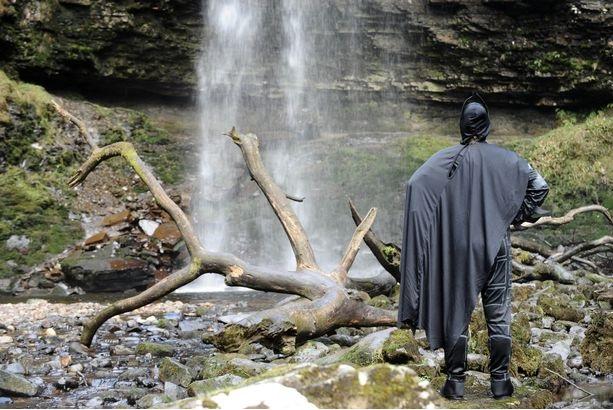
Geology
Henrhyd Falls has formed millions of years ago and date back to the last Ice Age. It’s formed by the Nant Llech river which is a minor river in Powys. The name translates to ‘slab stream’ due to the sandstone that forms around the gorge. Henrhyd water Falls occur where the river drops over the faulted edge of hard sandstone. The sandstone formation known as the Farewell Rock forms the top half of the rock face and also the base of the South Wales Coal Measures. Beneath this, many portions of the drop, is the Subcrenatum Sandstone separated from the Farewell Rock above by the Subcrenatum marine band.
Both the marine band and sandstone are part of the Bishopston Mudstone Formation, which was traditionally known as the Millstone Grit series. A stream gully between the descent path of falls marks the line of the Henrhyd Fault which is responsible for the falls’ presence. The waterfall is reached after a steep walk down into the valley and is a popular spot to visit. A further footpath leads steeply down to the falls on the opposite side of the valley from Heol Henrhyd, the road through Coelbren village.
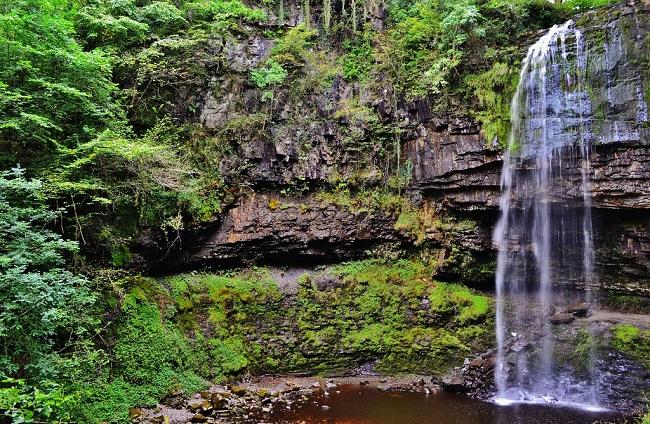
Henrhyd Falls walk
Admire by the nature, the spectacular falls in full flow Plunging into the Graig Llech Gorge and falls are best seen after a heavy downpour. The damp and wet grounds here could be attributed to the fact that this forest was considered to be a rainforest. There were moss and ferns growing around the trail attesting to the high rainfall of the area. The sun would rarely make it this deep into the ravine as a result of the narrowness of the gorge and the height of the trees. Visitors can take time to walk around the meander down the Nant Llech valley admiring the haven for wildlife that surrounds you and passing a disused watermill, the Melin Llech, along the way.
Henrhyd Falls trail is 5.63 km, out and back trail near Ystradfellte, Powys. Generally considered an easy route. This trail is great for hiking, walking, and other nature trips. The Trail is started from the National Trust car park and pass through a wooden bridge, walking up the steep steps to the footpath at the top. The bridge was built in 1985 by a team of international workers. The steps were added in 2001 following a landslide that destroyed the original path. Continue along the footpath to the waterfall. Due to the spray from the falls, the ground became slippery so, precaution is required. Once you’ve taken the time to enjoy the spectacular waterfall. The next destination is Nant Llech valley. The trees that cling to the steep sides of the valley are mainly sessile oak and ash, although you can also find small-leafed lime, alder, and wych elm. Many of the mature ash trees have been affected by ash die. there are many, the smaller waterfall can be seen in around the valley.
Also, read- Geotourism around The Pyrenees Mountain Range
A site of a former large landslide area can be seen near a small bridge. These features are part of the natural processes that have helped create the dramatic landscape of this steep gorge. Along with this path, visitors can find a disused watermill – the Melin Llech. after a short distance, River Tawe is seen in the area. This river flows all the way to Swansea and into the Bristol Channel.
Best time to visit
Thousands of visitors like to walk behind the waterfall and so the best time for this experience would be in late spring and summer. This is when the water flow is lowest and it would also be the safest time to visit the waterfall. To see the waterfall at its heaviest, visiting in late autumn and in the middle of winter is a perfect time.
visitors can also get to see it when it’s been raining really heavily for a few days.
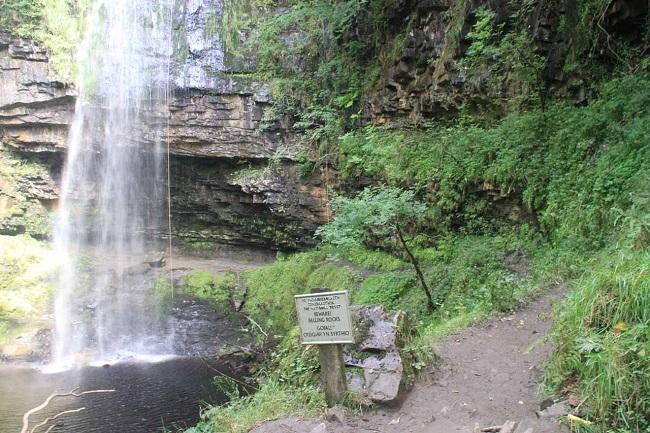
How to get to Henrhyd Falls
The waterfall in South Wales can be found on the fringes of the Brecon Beacons National Park. it is around 40 miles away from Cardiff. In the Brecon Beacons near the waterfall, The other attractions are- Craig Y Nos Castle and the National Showcaves Centre for Wales. Geo-tourist can plan a trip to Pen-y-Fan, Penderyn Distillery, Dinas Rock or the Four Waterfalls Walk which is near this area.
